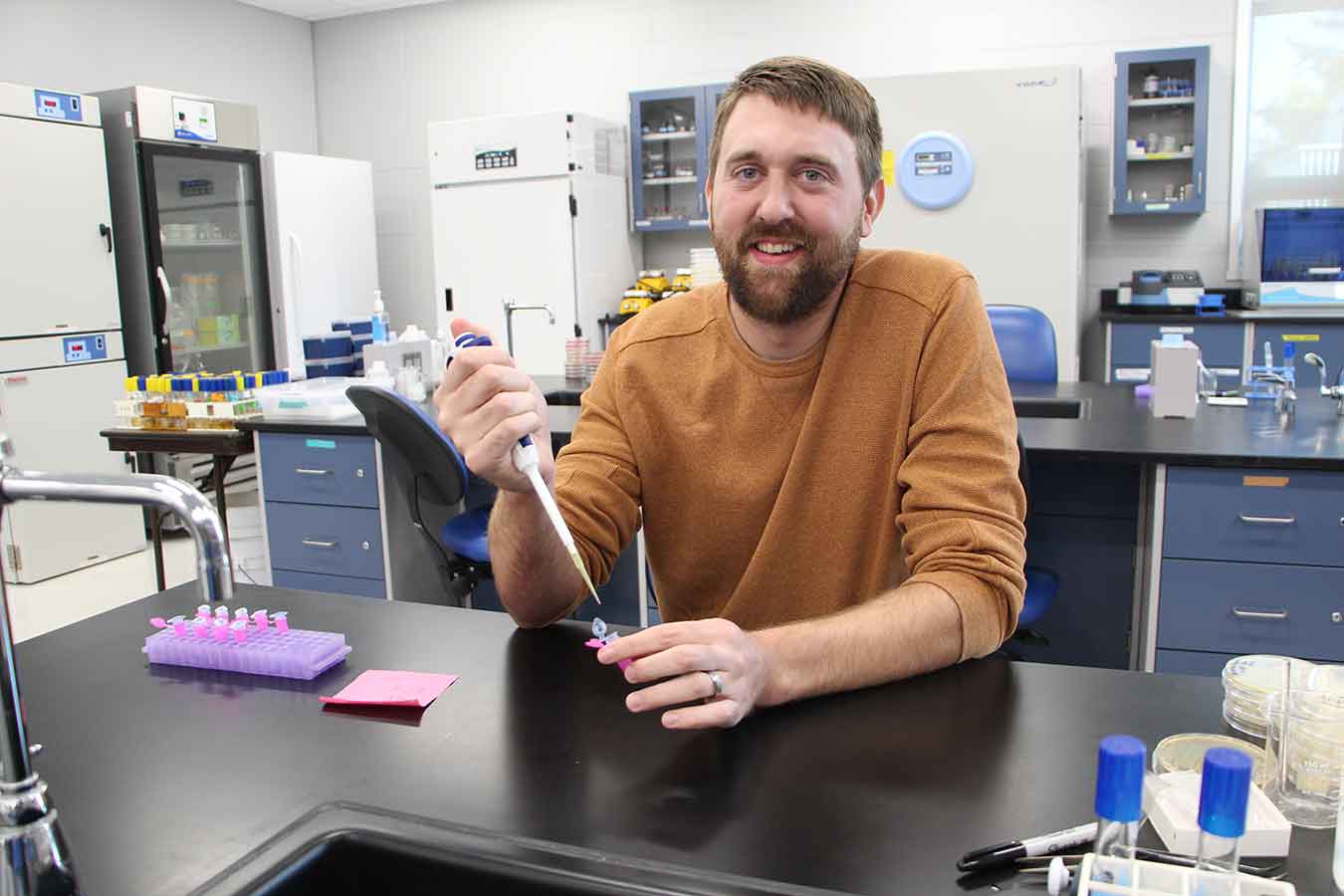Students benefit from publication process
November 17, 2021

By making a little progress every day, you can get a lot accomplished.
This simple advice that Dr. Andrew Sathoff gives his undergraduate research students is being proven right.
With daily progress researching Aphanomyces (or root rot) in alfalfa over two summers, Dakota State University students Jennifer Giles and Conner Tordsen have gathered enough data and information to submit an article to the journal “Plant Disease.”
Their article was published at the end of August 2021. This work, done in collaboration with the University of Minnesota and the USDA, should be highly cited, Sathoff said, and “being published in high impact journals can give students a ticket to graduate school.”
DSU is distinctive in that undergraduate students have the opportunity to participate in research that is at the level of graduate students.
“This is rare,” Sathoff said, “for students to have some control of their project, and one-on-one attention of their professor.”
Giles, Tordsen, and fellow student Travis Rebstock are working on another manuscript for submission to the journal “Plant Pathology” this fall, based on Tordsen’s work from a 2020 Student Research Initiative grant.
Rebstock, a Biology major from Redwood Falls, Minn., said the research experience helps him put to good use what he learns in the classroom.
“Being able to see everything come together discussed in a real research environment has helped me truly enjoy some of the things we have learned in the classroom,” he said. It also adds new knowledge. “I never knew, before this experience, how much time and effort goes into a publication.”
Through the publication process, students learn important communication skills such as technical writing skills, and public speaking skills as they present their work at live or virtual events. Because they have done their own research, they have a better understanding of the project, and can better answer questions.
These experiences develop their critical thinking skills. “The students have been surprised by the length of the peer review process,” Sathoff said, but it helps them learn to look critically at their writing, to persist, and to develop a little bit of a thick skin.
“Having this experience and knowledge, I will hopefully be able to be more proficient and productive in future scientific writings,” Rebstock said.
After he graduates in 2023, he hopes to go to graduate school to be a physician assistant.
The information in these scientific journals is for specialists and scientists, Sathoff said, but to help growers and make more of an impact in the field, Sathoff and the research students are also writing for grower-focused publications.
Additionally, through a collaboration with Sara Bauder, SDSU Extension Agronomy Field Specialist., Sathoff was able to have the students write a Fact Sheet on Aphanomyces that has been published on the SDSU Extension website. “This gives the students experience with a different style of writing for a different audience,” Sathoff said.
Alfalfa is the third most valuable crop in the U.S., with 10.8 bushels produced in 2019; it provides the best protein per acre yield. The biggest problem with the perennial plant is a disease, and not much research is being done. DSU is the only place in South Dakota doing alfalfa pathogen research.
